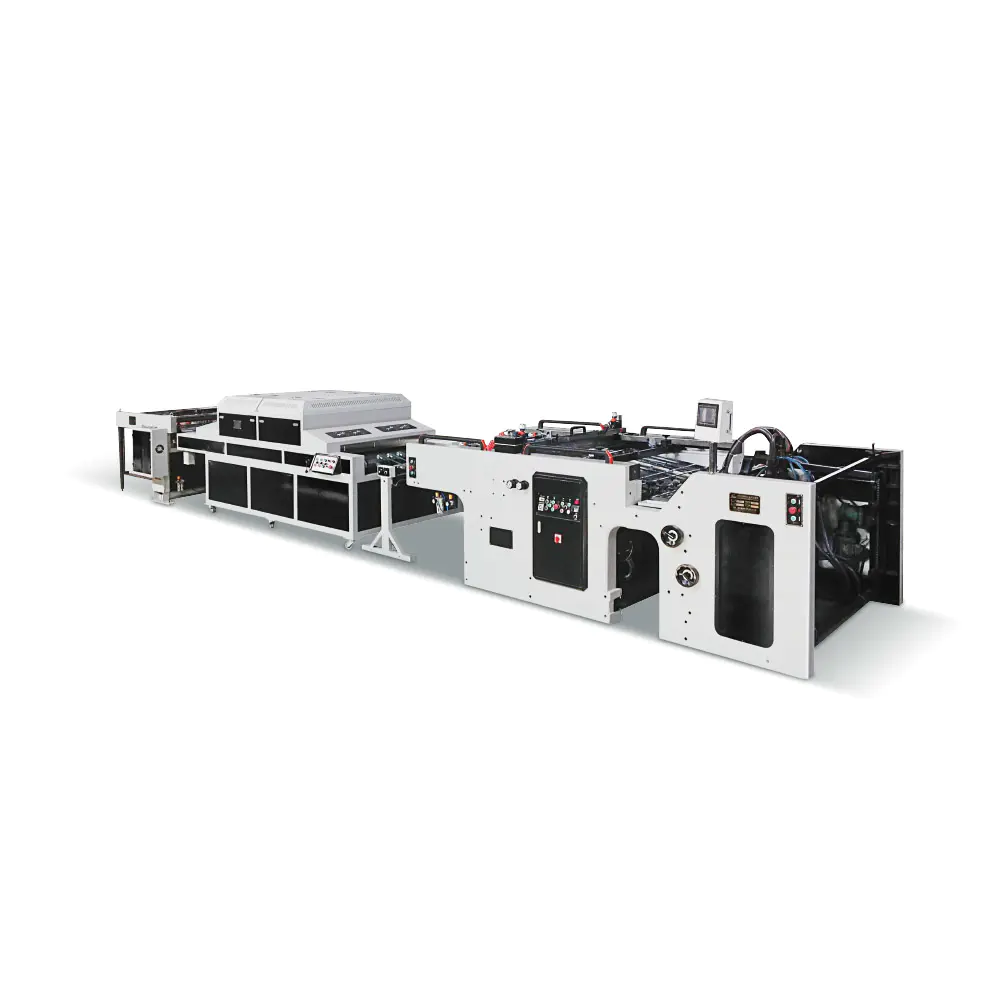- Home
- About Us
- Products
- Automatic Paper Embossing Machine
- Die Cutting Embossing Machine
- Foil Stamping Embossing Machine
- Screen Printing Machine
- Cardboard Laminating Machine
- Positioning Sheet Cutting Machine
- Hologram Laser Embossing Machine
- Screen Complete Printing Equipment
- H1000/H1500 Frame Making Machine
- 1100PM Plate Baking Machine
- EX1215/EX1518 Screen Exposure Machine
- MX1214/MX1518 Manual Screen Stretching Machine
- SFL-3F Compressed Air Dryer Machine
- EX1150 Vacuum Exposure Machine
- G1200 Manual Squeegee Grinding Machine
- E1300 Laser Engraving & Etching Machine
- UV3500R UV Dryer Machine
- Printing Material
- News Center
- Faq
- Contact Us
Web Menu
- Home
- About Us
- Products
- Automatic Paper Embossing Machine
- Die Cutting Embossing Machine
- Foil Stamping Embossing Machine
- Screen Printing Machine
- Cardboard Laminating Machine
- Positioning Sheet Cutting Machine
- Hologram Laser Embossing Machine
- Screen Complete Printing Equipment
- H1000/H1500 Frame Making Machine
- 1100PM Plate Baking Machine
- EX1215/EX1518 Screen Exposure Machine
- MX1214/MX1518 Manual Screen Stretching Machine
- SFL-3F Compressed Air Dryer Machine
- EX1150 Vacuum Exposure Machine
- G1200 Manual Squeegee Grinding Machine
- E1300 Laser Engraving & Etching Machine
- UV3500R UV Dryer Machine
- Printing Material
- News Center
- Faq
- Contact Us
Product Search
Exit Menu
How has UV curing technology in screen printing machines sped up the drying process?
UV curing technology has revolutionized the drying process in screen printing machines by using ultraviolet (UV) light to rapidly cure and harden inks. Here’s how it speeds up the drying process compared to traditional methods:
Instantaneous Drying:
In traditional screen printing, inks (especially solvent-based or water-based inks) need time to air dry or pass through heated dryers, which can be a slow process, especially with thick inks or high-volume prints.
UV curing uses UV light to instantly cure the ink, meaning the printed items can be handled or processed immediately after printing. The UV light causes a photochemical reaction in the ink, turning it from a liquid to a solid almost instantaneously, drastically reducing drying times.
No Evaporation Required:
Traditional drying methods rely on the evaporation of solvents or water from the ink, which takes time and can be uneven, leading to inconsistencies in drying, especially with large production runs.
UV curing inks, on the other hand, don’t require evaporation. Instead, the inks contain photoinitiators that react to UV light, hardening the ink without waiting for solvent evaporation. This speeds up the overall process and avoids issues like ink smudging or incomplete drying.
Continuous Production:
Because UV curing happens so quickly, the screen printing process can run in a continuous, high-speed mode, with prints being cured almost immediately as they come off the press. This is especially useful in high-volume production settings where speed and efficiency are critical.
This reduces the need for extra equipment like drying racks or large heated dryers, allowing for faster production cycles and greater throughput.
Energy Efficiency:
UV curing systems are typically more energy-efficient than traditional drying methods, which often rely on heat or hot air that consumes a lot of energy and space. UV lamps provide focused energy that only activates when needed, reducing overall energy consumption while speeding up production.
Improved Ink Adhesion and Durability:
UV curing creates stronger bonds between the ink and the substrate (material being printed on), leading to better adhesion and greater durability of the final product. The ink sets completely within seconds, reducing the risk of smudging, cracking, or fading during or after production.
This allows for immediate handling of printed products, even on delicate or heat-sensitive materials, without waiting for traditional drying.

Compatibility with Various Materials:
UV curing works well on a wide range of materials, including plastics, glass, metals, textiles, and ceramics, which typically require different drying conditions. This versatility means UV-curable inks can be used across different industries, allowing printers to switch materials without worrying about long drying times for each specific substrate.
Environmental Benefits:
UV-curable inks don’t contain as many volatile organic compounds (VOCs) as solvent-based inks, which are released during traditional drying processes. By eliminating the need for evaporation and solvent-based drying, UV curing is more eco-friendly, while also accelerating production.
Less Space Needed for Drying:
Traditional drying methods often require long conveyor belts or drying racks to allow time for the ink to fully set, which can take up valuable space in the production facility. UV curing systems, on the other hand, have a smaller footprint because the curing happens almost instantly under UV light, minimizing the need for large drying areas.
In summary, UV curing technology in screen printing machines significantly speeds up the drying process by using rapid, light-based curing rather than relying on time-consuming evaporation or heat. This technology enables immediate handling, greater production efficiency, consistent ink performance, and energy savings, making it a major advancement over traditional drying methods.
of interest
Didn't Find A Product That Suits You?
Contact us for the latest news.
QUICK LINKS
PRODUCT CENTER
Contact Us
-

+86 13738772345
-

13738772345@163.com
-

+86-577-68100881
-

+86-577-68100882
-

No. 11 Haifeng Road, Longgang City, Wenzhou City, Zhejiang Province, China


 中文简体
中文简体 Español
Español












